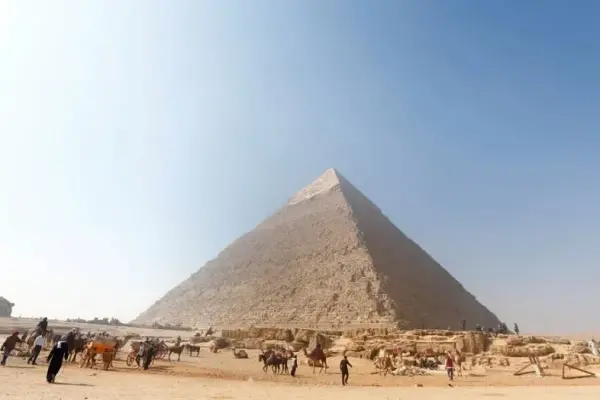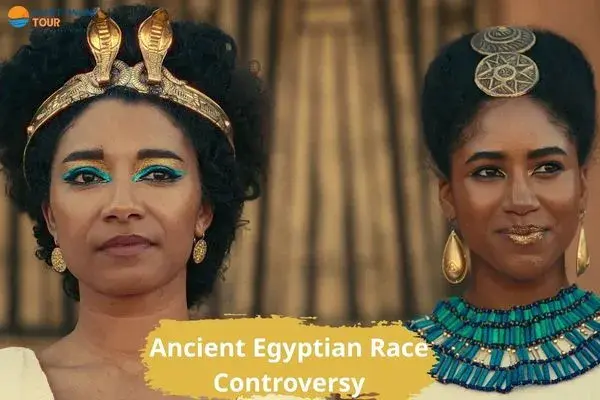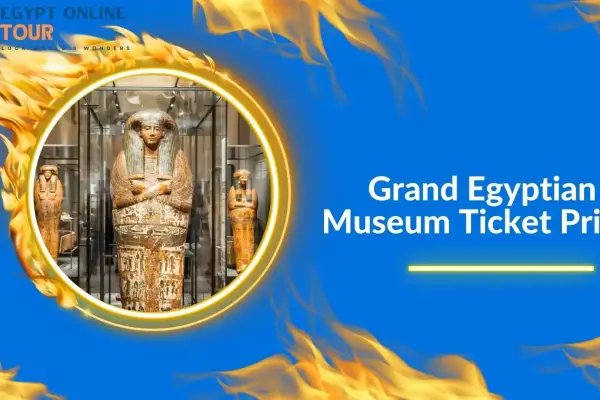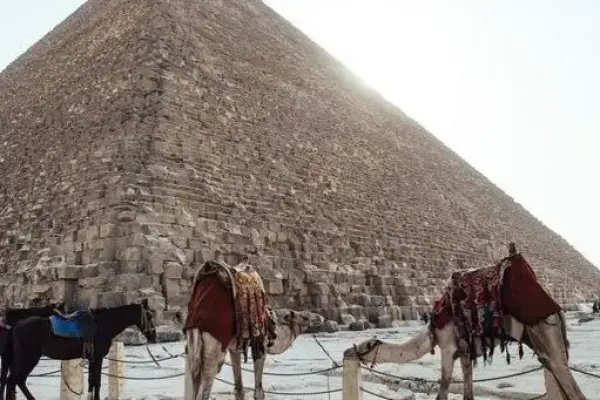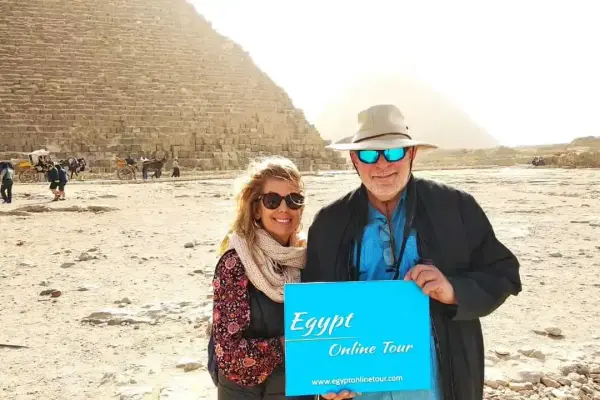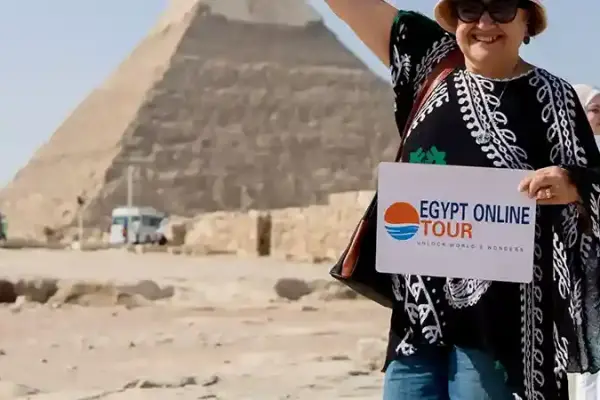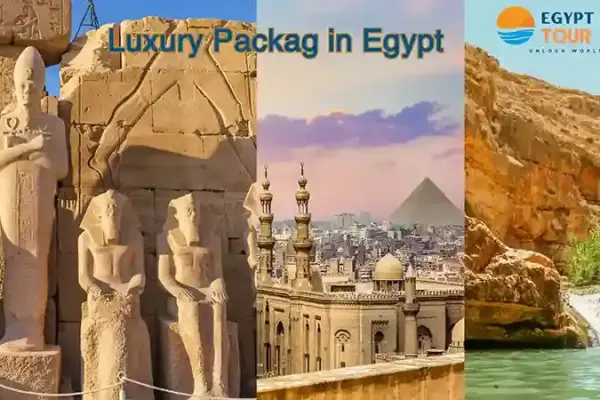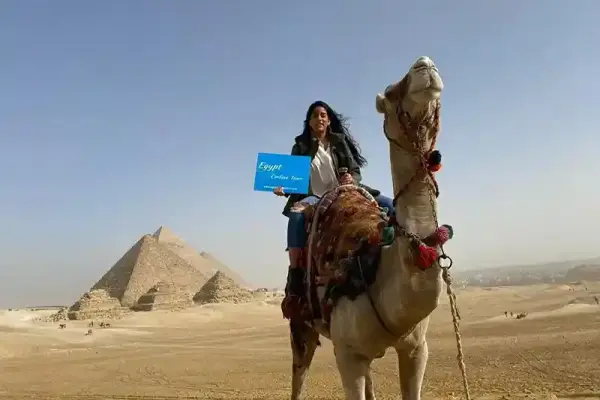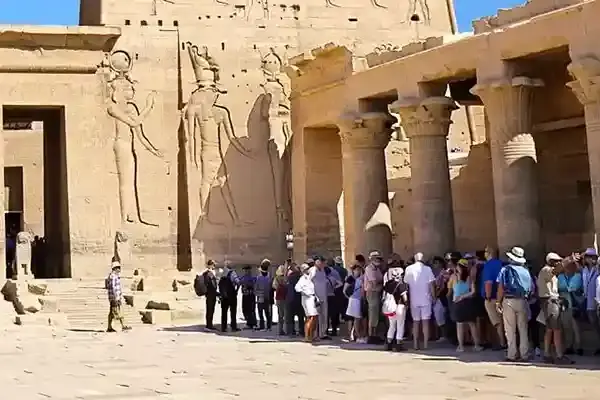Modern Egyptians show a higher proportion of sub-Saharan African genetics (approximately 8–15% more than their ancient ancestors), attributed to increased trade and migration across the Nile, particularly the slave trade, over the past 1,500 years. In short, Ancient Egyptian race controversy were a settled, rooted group in northeast Africa with strong genetic ties to the Near East, not "Europeans" or "sub-Saharan Africans" in the simplistic modern sense.
Table of contents [Show]
- What Is the Ancient Egyptian Race Controversy?
- Witness the Magical Art of the Ancient Egyptian Race
- Ancient Theories About the Race of the Ancient Egyptians
- The Impact of Colonialism on Egyptology
- Were Egyptians Black?
- Egyptian Culture: The Nile Created a Unique People
- Ancient Egyptian race controversy
- What Was the Ancient Egyptian Race Categorization?
- The Marvelous Genetic Race of Ancient Egyptian Mummies
- The 1974 UNESCO Debate: A Watershed Moment in History
- DNA Studies: Modern Science and Ancient Mummies
- Afrocentric vs. Eurocentric Perspectives Explained
- How This Debate Shapes Our Understanding of Egypt
- Famous Figures in the Debate: Tutankhamun and Cleopatra
- Visit Key Historical Sites Linked to Egypt's Heritage
- Why choose Egypt Online Tour?
- Explore Temples and Tombs in Luxor and the Nile Valley.
- Plan Your Historical Egypt Tour with Egypt Online Tour
- Conclusion
What Is the Ancient Egyptian Race Controversy?
The racial controversy in ancient Egypt is a modern debate about the racial and ethnic identity of the ancient Egyptians. This debate often raises:
Were the ancient Egyptians black Africans, white Africans, or something else?
This question is more than academic; it is closely related to identity, colonialism, and cultural pride. During the 18th and 19th centuries, many Western scholars refused to believe that a black African civilization could achieve such architectural, scientific, and cultural greatness. As a result, some early Egyptologists attempted to separate ancient Egypt from the rest of Africa, proposing theories that the civilization was founded by invaders from Europe or the Middle East.
African Origin
On the other hand, many African-oriented scholars highlight the African origins of Egyptian culture—from physical similarities in art to linguistic and religious connections with other African civilizations—and argue that the ancient Egyptians were black. Modern science, particularly genetic research, has shown that the ancient Egyptians were neither "black" nor "white" in modern racial terms. DNA studies reveal that they were a mixed people with genetic links to Northeast Africa, the Levant, and even Southern Europe. Ancient Egypt was a melting pot shaped by migration, trade, and geography.
So, the "controversy" isn't really about history, but about how modern people want to claim (or deny) Egypt's heritage based on racial and political agendas.
Witness the Magical Art of the Ancient Egyptian Race
The artistic heritage of ancient Egypt is one of the greatest and most wonderful achievements of Egypt and the whole world. Their art was not merely decorative; it was deeply spiritual and symbolic, serving as a bridge between the earthly and spiritual worlds. From the majestic wall paintings in the tombs of the Valley of the Kings to the delicate craftsmanship of the jewelry found in pharaonic tombs, Egyptian art reflects a profound sense of order, beauty, and religiosity.
The Egyptians mastered multiple forms of artistic expression: stone and wood carving, mural painting, metalworking, and jewelry making. Their style has remained remarkably consistent over the millennia, not due to a lack of innovation, but rather due to their deep reverence for tradition and symbolic representation. Figures were often depicted in complex perspective—faces in profile with eyes and shoulders facing forward—a style that emphasizes clarity and timelessness rather than naturalistic perspective.
What makes ancient Egyptian art truly enchanting
What makes ancient Egyptian art truly enchanting is its purpose. It was a functional art, created to ensure the survival of the soul in the afterlife. Each statue, amulet, and stela served to guide and protect the deceased. This artistic vision, coupled with exceptional technical skill, provides a direct window into how the ancient Egyptians viewed their world, their gods, and themselves.
Ancient Theories About the Race of the Ancient Egyptians
In the nineteenth century, Europeans (especially the British and French) were fascinated by Egyptian civilization, but their minds were so steeped in colonialism that they couldn't accept the idea that an ancient African people was capable of such feats! They began to put forward bizarre and racist theories:
- The "Aryan Race" Theory: They claimed that Egyptians were not truly Africans, but rather a "civilized" race from the East or Europe.
- The "Northern Invaders" Theory: They claimed that the pharaohs were white foreigners! This, of course, is nonsense and not based on any scientific evidence.
- The Falsification of History: They attempted to separate Egypt from Africa and claim that it was a "Mediterranean" civilization, not an African one!
All of these theories aimed to distort Egyptian history and claim that Africans and Black people were incapable of building a civilization.
The Impact of Colonialism on Egyptology
Colonialism subjected the study of ancient Egypt to objectivity for many years, and its influence continues to this day:
Bias in international museums:
Most pharaonic statues in European museums are dimly lit to avoid perpetuating the stereotype of "blackness," and are colored in light colors in books and on mannequins!
Education in the West:
In foreign schools, ancient Egypt is not taught as part of Africa! But they treat it as something strange and mysterious.
Denial of African identity:
To this day, some reject the idea that ancient Egypt was culturally and genetically linked to its African neighbors in Nubia, Sudan, and Ethiopia.
Results so far:
The controversy we have witnessed on social media over the color of the busts of Nefertiti and Tutankhamun I wonder if it is black or white! This particular thinking is colonial thinking that has no basis in ancient Egypt.
The heirs of colonialism are still trying to steal Egypt's history or change its identity, but science and genetics (DNA) have proven them wrong. Ancient Egypt was a fascinating blend of North African and Near Eastern cultures, and modern Egypt is the rightful heir to this history in all its forms. And we are proud of that.
Were Egyptians Black?
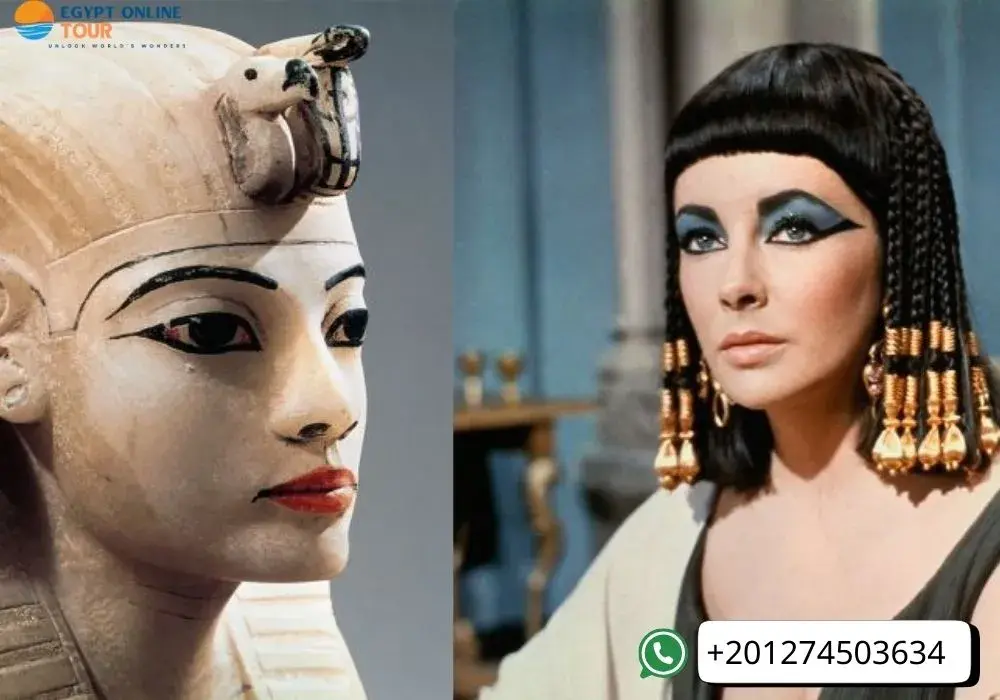
The question of whether the ancient Egyptians were "Black" and “ What Does Queen Cleopatra Look Like ” is deeply intertwined with modern racial and political discourses, more than it is with how ancient peoples defined themselves. Ancient Egypt was a civilization rooted in northeast Africa, and its inhabitants were indigenous to the Nile Valley. However, the ancient world did not define identity through modern racial concepts based on color.
Genetic and anthropological research indicates that the population of ancient Egypt was diverse and mixed, shaped by millennia of migration, trade, and interaction across Africa and the Near East. Ancient DNA studies show genetic continuity with populations from the Levant and other parts of North Africa, as well as connections to regions further south.
Watch yourself the real magic of ancient Egypt with the best Egypt Budget Tours .
"Black" or "White"
Artistically, the Egyptians depicted themselves with a variety of skin tones—from reddish-brown to light yellow—which often varied based on gender, symbolism, and context, rather than purely biological reality. For example, men were often depicted with darker skin (associating them with outdoor work), while women were depicted with lighter skin.
Most scholars today assert that applying modern racial labels such as "Black" or "White" to ancient Egyptians is outdated. Rather, it is more effective to recognize Egypt as an African civilization—culturally, geographically, and historically—whose achievements belong to all of humanity, transcending narrow racial categories.
Let our local travel experts help you design the perfect itinerary. Whether you're seeking adventure, culture, or relaxation, we've got you covered!
Egyptian Culture: The Nile Created a Unique People
Whatever their skin color, what matters most to us is Egyptian culture.
- One of the most important features of their culture is that they were the first to invent paper, which was made from papyrus.
- They were also the first to invent writing (hieroglyphics).
- They were also very precise in their recording.
- They developed the sciences of medicine and mummification to an astonishing degree.
- They built the greatest pyramids and temples in the world.
- They had myths and a complex religion that told the story of a people who believed in a message.
The debate over color is absurd! The ancient Egyptian genius was the product of the land of the Nile, which brought together people from all over the world and melted them into the greatest civilization in history!
Ancient Egyptian race controversy
The origin and gender of the ancient Egyptians have long been a source of considerable controversy, often driven more by contemporary political and racist agendas than by the pursuit of historical truth. To understand this issue, we must move beyond preconceived theories to the concrete evidence provided by modern science, particularly paleogenetics and archaeology.
Genetic Evidence: The Clearest Window
Crucial genetic studies have been conducted in recent years on mummified human remains from various archaeological sites in Egypt, such as one published in Nature Communications in 2017. Genetic studies were conducted on mummies discovered at Abusir el-Meleq in Egypt, with samples spanning a period between around 1400 BC and 400 AD.
The results
Research shows that ancient Egyptians shared closer genetic ties with populations from the ancient Near East — including the Levant and Anatolia — than with modern Egyptians. Mummies from the Pharaonic era revealed strong similarities to Neolithic communities in Anatolia and Europe, suggesting that Egypt’s ancestors were part of a broad migration wave that spread into North Africa and Europe thousands of years ago, introducing new farming practices along the way.
Archaeological and Artistic Evidence: Visual Testimony

Ancient Egyptian artifacts and art challenge any notion of racial purity.
Diversity in Depiction: Egyptians depicted themselves with a variety of skin tones, from dark brown to light yellow. This does not necessarily reflect different "races," but rather reflects the natural diversity among the population and the roles they played (for example, men were often depicted with a darker complexion because they worked in the sun, while women were depicted with a lighter complexion).
Statues and paintings:
The statue of Queen Tiye, consort of Amenhotep III, reflects clearly African traits, while depictions of the priest Rahotep and his relatives show lighter complexions. This variation, even within Egypt’s elite, highlights how the civilization was shaped by a blend of ethnic influences — from Nubia, Libya, and the Near East — woven together through centuries of interaction.
Attempts to ascribe a modern ethnic identity to the ancient Egyptians are misguided and unsuccessful. "Race" was not an existing concept in their thinking as we know it today. Their identity was based on geographic belonging (the land of Egypt), a shared culture (language, religion, customs), and loyalty to the pharaoh.
Mixed civilization
Egypt has always combined all civilizations. It is considered an African, a European, an Asian and a Mediterranean civilization because it is located at the crossroads of three continents. It was a magnet for peoples from all directions: from Nubia in the south, Libya in the west, and the Levant and Anatolia in the northeast. Its strength came from this cultural and genetic intermingling, not from any illusory racial purity. The right question is not, "What is their ethnicity?" but, "How did these diverse people build one of the most enduring and creative civilizations in human history?"
Enjoy the real old civilization in Egypt through 3 Days in Cairo and Luxor with the most experience travel company Egypt online tour
What Was the Ancient Egyptian Race Categorization?
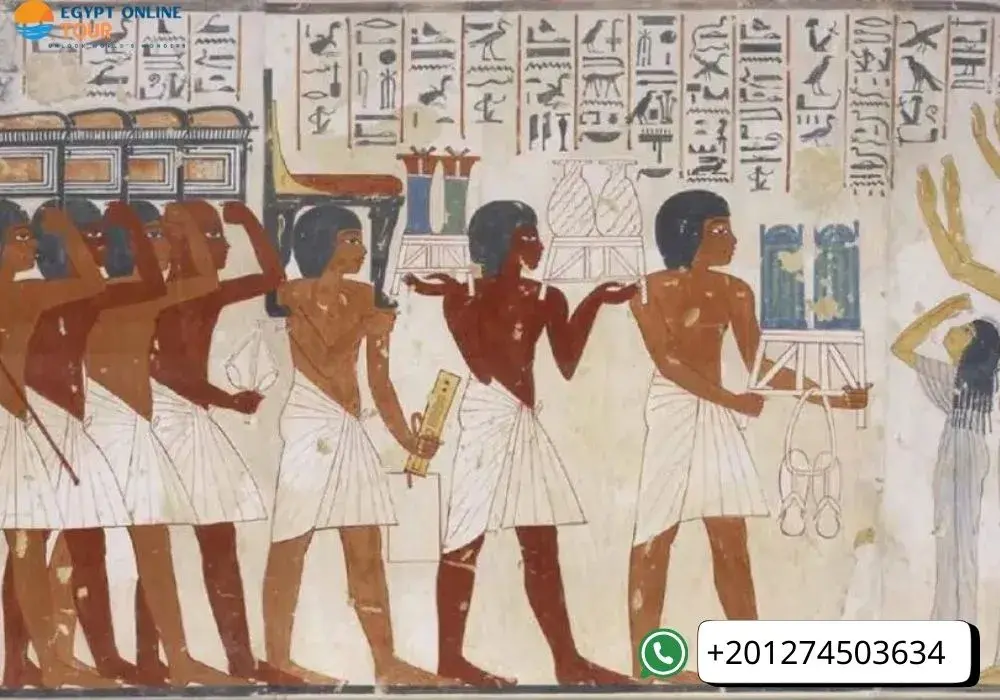
Hello, my friend. This is a big and important question! The truth is that the ancient Egyptians didn't categorize themselves by color or race in the modern way. They categorized people based on nationality and culture, not skin color. That is, they would say "Egyptian," "Nubian," or "Asian" (meaning from the East).
The pharaohs themselves depicted themselves in drawings as reddish-brown, and women as slightly lighter. This was because men worked outdoors in the sun, not because they were a different "race"!
They also had a great diversity—from dark-skinned to fair-skinned—because Egypt was always a meeting place for civilizations, traders, and neighbors from all over the world. Therefore, ancient Egyptian identity was based on land, culture, and religion, not on race or color.
The Marvelous Genetic Race of Ancient Egyptian Mummies
As for the genetic lineage of the ancient Egyptian "mummies," the truth is very exciting. In 2017, scientists conducted a genetic analysis of mummies from the Abusir el-Maleq area in Egypt, and the results were astonishing:
- The ancient Egyptians and the Achievements of King Tut were genetically closer to the inhabitants of the Near East (Syria, Palestine, Lebanon, Jordan) and to the people of Anatolia (Turkey).
- They shared genes with Europe and the Mediterranean region, due to very ancient migrations.
- Contemporary Egyptians have a higher proportion of genes from sub-Saharan Africa than their ancient ancestors, due to trade and migration over the years.
That's why we say that the ancient Egyptians were a unique mixture of Mediterranean, North African, and Near Eastern genes. There is no such thing as a "pure Egyptian race." The most important thing is that the origin of civilization is not in skin color, but in the creativity and genius that the ancient Egyptians created - from pyramids, medicine, and art - this is a global human heritage, and we all have to be proud of it without prejudice.
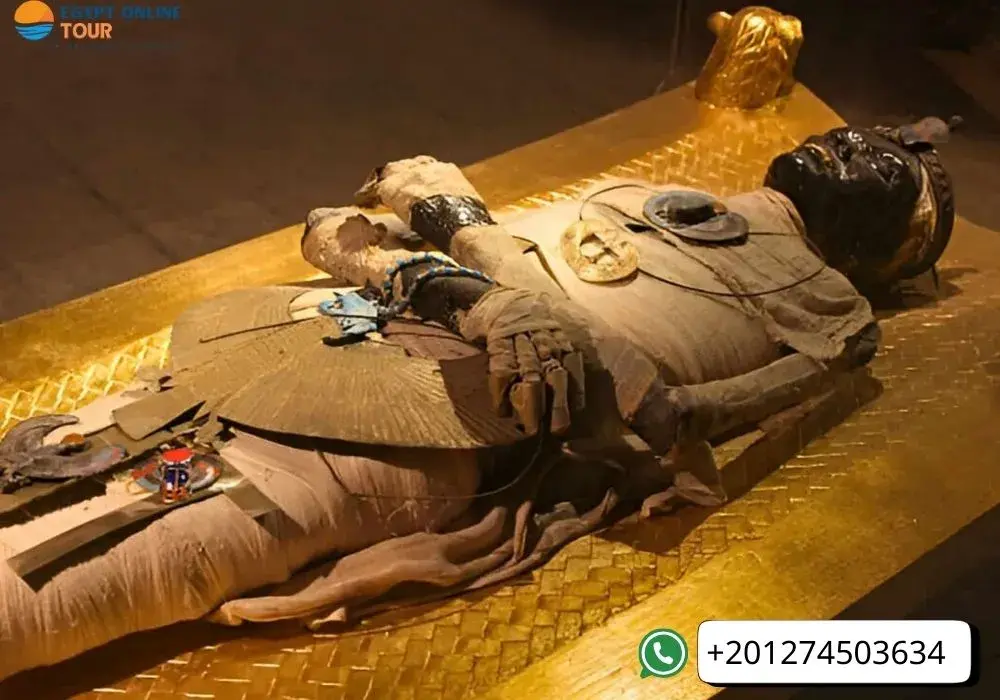
The 1974 UNESCO Debate: A Watershed Moment in History
UNESCO organized an international conference in Cairo entitled "Ancient Egypt in Africa" in 1974, " The goal was clear: to present the facts of history to world public opinion and to confront attempts to "whitewash" Egypt's history.
The most prominent points of this historic debate were:
Recognition of African Roots: The conference concluded that ancient Egyptian civilization was essentially African in origin. This does not mean denying external influences, but rather emphasizing that its foundation and roots lie deep in African soil.
Rejection of Modern Racial Classifications:
Participating scholars emphasized that projecting modern racial concepts (Black/White) onto the ancient Egyptians is a grave historical error. The ancient Egyptians did not recognize these divisions, and their identity was based on their geographical and cultural affiliation with the Nile Valley. Focus on Cultural Continuity: The conference highlighted the cultural similarities between ancient Egypt and other African civilizations, particularly in:
- Language: There are similarities between some elements of the ancient Egyptian language and other languages in Africa (the Afro-Asiatic language family).
- Religious Beliefs: Some symbols and myths are similar to those of West and East Africa.
Therefore, we can say that the 1974 UNESCO conference dealt a powerful blow to colonialist thought in Egyptology, reaffirming Egypt's African identity without denying its interaction with its neighbors.
DNA Studies: Modern Science and Ancient Mummies
With the advancement of scientific techniques, the debate has moved from the realm of theories and opinions to the realm of tangible genetic data. Science can now directly tell us who the ancient inhabitants of Egypt were.
How are these studies conducted?
Samples of ancient DNA (aDNA) are extracted from the bones or teeth of mummies, with strict procedures in sterile laboratories to prevent contamination of the samples with modern DNA. Key Studies and Findings:
The Abusir el-Melq Study (2017) - Nature Communications:
- Sample: DNA analysis of 151 mummies from the Abusir el-Melq site in Middle Egypt, dating from approximately 1400 BC to AD 400.
- Key Finding: The mummies showed close genetic links to Neolithic peoples from the Near East (the Levant and Anatolia), as well as a genetic component from indigenous North African populations.
Modern Egyptians
Comparison with Modern Egyptians: The study found that modern Egyptians have a higher proportion of sub-Saharan African genes (approximately 8%) than their ancient ancestors. Scientists attribute this to increased trade (particularly the slave trade) and migration along the Nile River over the past 1,500 years. Other studies support diversity:
Studies of mummies from other sites (such as Wadi el-Hawl in the Oasis) have shown greater diversity, with genetic markers indicating the presence of individuals of Nubian, Libyan, and Greek origins among the population, confirming that Egypt was a melting pot of many nationalities.
The final scientific conclusion:
The ancient Egyptians were a settled group in northeast Africa, with strong genetic links to their neighbors in the Near East.
They were neither "European" (white) in the modern sense, nor were they entirely "sub-Saharan African" (black).
They were genetically closer to contemporary Middle Eastern populations (e.g., the populations of Turkey, Iraq, Syria, and Lebanon), with an inherent African component.
Diversity was a fundamental characteristic of ancient Egyptian society due to its unique geographical location.
So modern science, represented by DNA studies, has settled the debate once and for all. It has been proven that the great Egyptian civilization is the product of a mixed and diverse people who arose and flourished at the crossroads of the world's continents. It is a purely human heritage of which every Egyptian and every person on earth is proud.
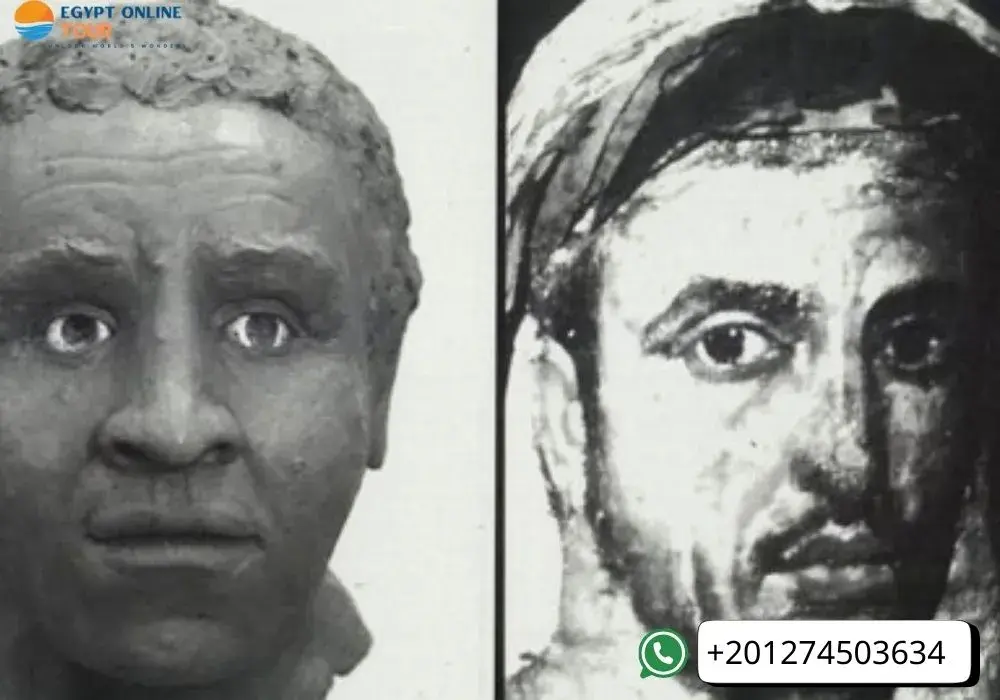
Afrocentric vs. Eurocentric Perspectives Explained
This debate represents a struggle for ownership of history and not necessarily a search for truth:
Eurocentric Perspective:
- Emerged in the 19th century during the European colonization of Egypt.
- Aimed to destroy Egypt's African identity.
- Claimed that the ancient Egyptians were a "superior white race."
Example: French Egyptologist Maspero described the pharaohs as "dark-skinned whites."
Afrocentric Perspective:
- Emerged as a reaction against colonial falsification.
- Emphasizes Egypt's deep African roots.
- Links Egypt to other African civilizations.
- Exaggerates claims without sufficient evidence.
Scientific Fact:
Both perspectives ignore the diversity of the ancient Egyptian people! Modern science confirms that Egypt was a melting pot, with:
- African genes (from the south)
- Middle Eastern genes (from the north)
- Mediterranean genes (from the sea)
- What Ancient Art and Temples Reveal About Identity
Art and temples are the most reliable evidence of the identity of the ancient Egyptians:
1- The diversity of colors in the paintings:
The Egyptians presented themselves in different colors:
- Men: reddish brown (because they worked in the sun)
- Women: light yellow (because they spent time indoors)
- Gods: symbolic colors (such as green for the god Osiris)
2- Representation of different peoples:
A famous inscription in an ancient Egyptian temple shows:
- Egyptians: reddish brown
- Nubians: dark black
- Libyans: yellowish white
- Asians: light yellow
3- Place names in temples:
- Memorial stelae in temples (such as the Karnak Temple) record the names of the places and peoples ruled by Egypt, demonstrating the great diversity
4- Statues that demonstrate diversity:
- Statue of Queen Tiye (wife of Amenhotep) Third: It shows clear African features.
- The statue of the seated scribe in the Louvre: shows pure Egyptian features.
- The statues of Ramses II: show him as a young man with red hair and an old man with white hair.
The ancient Egyptians were not obsessed with colors like we are today. They were a practical people, so they distinguished between people based on clothing, hairstyles, and languages. They considered Egypt the center, with the entire world surrounding it.
They did not confuse color with value, as some people do today. Moreover, ancient Egyptian art tells us: "We are Egyptians—and that's enough."
How This Debate Shapes Our Understanding of Egypt
This controversy strongly influences how people view ancient Egypt today:
Cultural Ownership:
Some groups exploit the racial controversy to claim Egypt's history as theirs exclusively—either as an African/Black achievement or as a Mediterranean/European achievement. This can ignore the true complexity of Egyptian identity.
Educational Impact:
How Egypt is taught in schools around the world often depends on who is telling the story. In the West, ancient Egypt is sometimes taught as semi-separate from Africa—a distortion that continues to influence perceptions. Pride vs. Prejudice:
Many people of African descent consider ancient Egypt a source of great pride, evidence of highly advanced Black civilizations long before colonization. Denying this connection can leave one feeling lost.
Scientific Insight:
Modern technologies, such as DNA analysis, help move the conversation beyond politics. Mummy studies show that the ancient Egyptians were most closely related to the peoples of the ancient Levant and Anatolia, but also possessed great genetic diversity.
Unity over Divide:
Recognizing that ancient Egypt was multicultural and multiethnic can help people appreciate it as a shared human heritage, rather than using it to reinforce modern racial divisions.
Ultimately, the most accurate way to view ancient Egypt is as a Nile Valley civilization that shared—and was influenced by—many influences: African, Near Eastern, and Mediterranean. Its true legacy lies not in race, but in human creativity, resilience, and genius.
Famous Figures in the Debate: Tutankhamun and Cleopatra
Tutankhamun: The Most Famous Controversial Figure
Tutankhamun's golden mask became a global icon, but his skin tone sparked considerable controversy:
- The African perspective: His features in statues (full lips, broad nose) clearly show African ancestry.
- The European perspective: Some historians have attempted to "lighten" his skin tone in paintings and museums.
- The Scientific Fact: DNA analysis proves that Tut was a pure Egyptian with a mixture of African and Middle Eastern genes.
Cleopatra: The Misunderstood Queen.
- Greek Origin: She descended from the Greek Ptolemaic dynasty.
- Egyptian Identity: She fully adopted Egyptian culture and religion and spoke the Egyptian language.
- Controversial Beauty: The West portrayed her as a white woman, while some sources assert she had mixed Mediterranean features.
Visit Key Historical Sites Linked to Egypt's Heritage
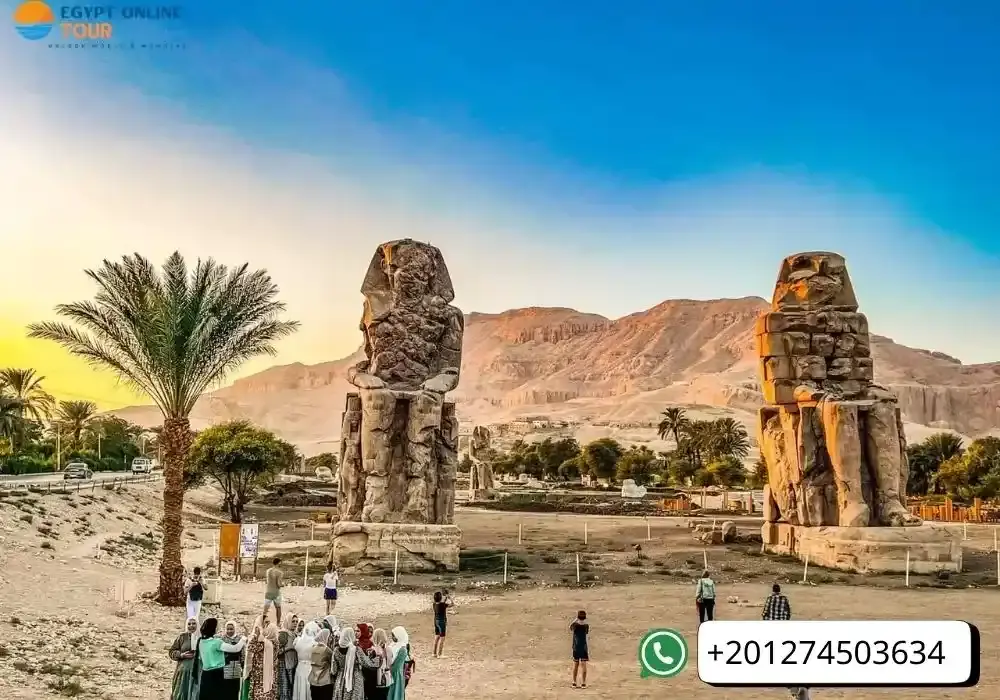
1. Valley of the Kings in Luxor
- Tutankhamun's Tomb (KV62): Where its treasures were discovered in 1922
- Seti I's Tomb: The deepest and most impressive
Egypt Online Tour Touch: We offer you a private tour with an archaeological expert who will explain the secrets of the inscriptions and symbols
2. Karnak Temples
- The greatest religious complex in the ancient world
- Hatshepsut's Obelisk
Egypt Online Tour Special Package: Private sunset visit with the legendary sound and light show
3. Hatshepsut's Temple at Deir el-Bahari
- A unique architectural masterpiece carved into the mountain
- the the most powerful queen in Egyptian
Egypt Online Tour Private Tour: Includes a workshop on ancient Egyptian architecture
4. Classical Alexandria
- Cleopatra's Underwater Palace: A unique diving adventure
- The Modern Library of Alexandria: A bridge between heritage and modernity
Egypt Online Tour Exclusive Package: A tour with a marine archaeologist
Why choose Egypt Online Tour?
1. Specialized Experts: Our team of expert archaeological guides is composed of the best in Egypt, graduates of archaeology departments from Egyptian and international universities, and fluent in various languages.
2. Unforgettable Experiences: We offer not just tours, but Egypt Adventure Tours into history As Dinner in the Valley of the Kings under the stars, private visits to halls closed to the public, and workshops on reading hieroglyphs.
3. Strict Commitment to Scientific Accuracy: All our information is supported by up-to-date research and scientific publications, avoiding myths and legends.
4. Luxury Services: Air-conditioned luxury vehicles, special permits for photography in archaeological sites, and a personal guide tailored to your interests.
Book your dream trip now with Egypt Online Tour.
Discover the whole truth behind the secrets of the Pharaohs with experts who know every detail of Egypt's great history.
Explore Temples and Tombs in Luxor and the Nile Valley.
Luxor: The largest open-air museum in the world.
• Karnak Temples:
- Walk through the ranks of giant rams.
- See the world's largest hypostyle hall (134 columns).
- Discover the lost obelisk and secret chambers.
Read about: Facts about The Temple of Karnak
• Valley of the Kings:
- Enter the tomb of Tutankhamun (KV62) - as discovered by Carter.
- See the tomb of Ramses VI with its most magnificent colored reliefs.
- Discover the deepest and most detailed tomb of Seti I.
Read about: How Many tombs in the Valley of the Kings
Hatshepsut Temple:
- A unique architectural masterpiece carved into the mountain.
- Hear the story of the woman who ruled Egypt as Pharaoh.
Read about: What did Hatshepsut do
Luxury Nile Cruise with Egypt Online Tour:
- Private Holiday: Stay at the historic Sofitel Winter Palace.
- Hot Air Balloon Tour Over Luxor Temples at Sunrise
- Private Visit to the Tombs of the Nobles and the Palace of Amunhotep III
See Luxury Oberoi Zahra Nile Cruise .
From Giza to Aswan: Walking Through Ancient History
Cairo and Giza:
Pyramids of Giza:
- Enter the King's Chamber of the Great Pyramid
- See the solar boats of Khufu (the oldest boats in the world)
- Take a photo with the Great Sphinx from exclusive angles
Read about: Facts About Ancient Pyramids in Egypt
Saqqara:
- Discover the Step Pyramid of Djoser (the first stone structure in history)
- Enter the tombs of workers decorated with reliefs of daily life
Aswan and South:
- Philae Temples
- Rescue Island, salvaged from the Nile
- Watch the most spectacular sound and light show in Egypt
Abu Simbel Temple
- A Marvel of Ancient and Modern Engineering
- Watch the Sun Shine on the Face of Ramses II (February/October 22)
Read about: Facts about Abu Simbel Temple
Project of the 20th Century:
- Visit the High Dam - a Marvel of Modern Engineering
- Tour the Award-Winning Nubian Museum
Plan Your Historical Egypt Tour with Egypt Online Tour
Our Luxury Egypt Tours Include:
Diamond Package 10-Day Egypt Nile & Alexandria Tour:
- Accommodation in 5-star hotels (Mena House, Old Cataract)
- Private Nile Cruise
- Private Archaeological Guide, Doctor of Egyptology
- Private Visits to Halls Closed to the Public
- Dinner in the Valley of the Kings under the Stars
Gold Package 8 Days Luxury Cairo & Nile Cruise
- Private Tours of the Top 3 Sites in Each Region
- Fluent Language-Speaking Guide
- Luxury Transportation (Air-Conditioned BMW Cars)
- Entrance Tickets to All Sites
- Exclusive Benefits with Egypt Online Tour:
- Professional Photography Permits at All Archaeological Sites
- A Restoration Expert Accompanying You to Explain the Secrets of Preservation
- Workshops on Hieroglyphics and Mummification
- A Certificate of Visit Signed by the Egyptian Ministry of Antiquities
- Limited Edition Special Offers:
- Archaeological Diving Trip in Alexandria (Cleopatra's Sunken City)
- Coptic Christian Monuments Tour in Ancient Egypt
- Pharaonic Sinai Trip (Turquoise Mines and Ancient Inscriptions)
Contact Us on:
WhatsApp: +201274503634
Email: [email protected]
Egypt Online Tour - Where we let you touch history
Let our local travel experts help you design the perfect itinerary. Whether you're seeking adventure, culture, or relaxation, we've got you covered!
Conclusion
The Ancient Egyptian race controversy remains one of the most debated questions in history. While scholars, archaeologists, and scientists continue to analyze evidence and argue over interpretations, one fact is undeniable: ancient Egypt was a crossroads of cultures, ideas, and peoples. Instead of reducing this rich civilization to a single identity, it is more meaningful to celebrate its diversity and the lasting legacy it left behind. For travelers, students, and history lovers, the real treasure lies not in the controversy itself, but in the chance to connect with the monuments, artifacts, and stories that continue to inspire the world today.
Frequently Asked Questions
1 Why is the race of ancient Egyptians controversial ▶
2 Did ancient Egyptians see themselves in racial terms ▶
3 What is the Dynastic Race Theory ▶
4 Why does the controversy matter today ▶
Popular Categories
Popular Posts

Top Alexandria Beaches You Must Visit 2026
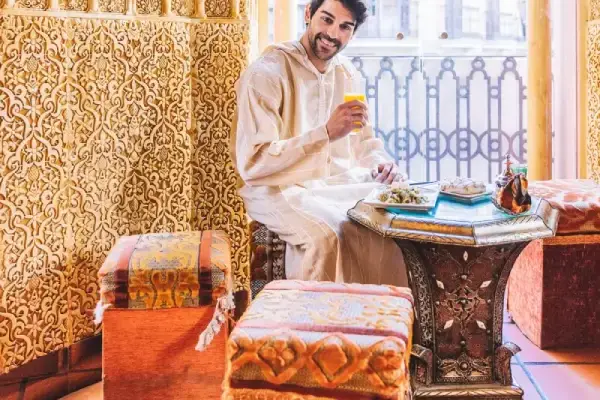
What are the important holidays in Egypt?
